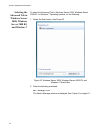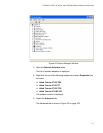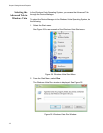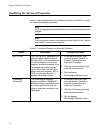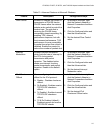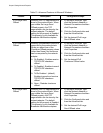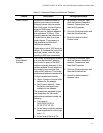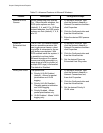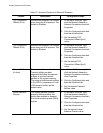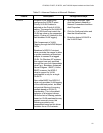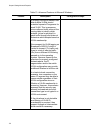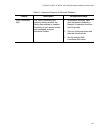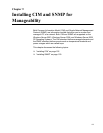
Chapter 8: Setting Advanced Properties
118
Number of RSS
Queues
Allows configuring RSS queues.
For 1 Gbps network adapters, the
RSS queue options are Auto
(default), 2, 4, and 8. For 10 Gbps
network adapters, the RSS queue
options are Auto (default), 2, 4, 8,
and 16.
1. In Microsoft Windows, right-
click the Network Adapter in
Network Connections and then
click Properties.
2. Click the Configure button and
then the Advanced tab.
3. Enter the desired RSS queues
value.
Pause on
Exhausted Host
Ring
The AT-VNC10S network adapter
has two possible scenarios that
can trigger pause frames: a host
ring buffer is exhausted or the on-
chip buffers are depleted. With
RSS enabled inside the system, it
is possible to achieve better
Ethernet throughput if no pause
frames are being generated in a
case where a host ring buffer (of
multiple RSS rings) is exhausted.
The default is Disabled.
1. In Microsoft Windows, right-
click the Network Adapter in
Network Connections and then
click Properties.
2. Click the Configure button and
then the Advanced tab.
3. Set the desired Pause on
Exhausted Host Ring value.
Priority and VLAN The options are:
Priority & VLAN Enabled
(default) - Allows for packet
prioritization and VLAN
tagging.
Priority & VLAN Disabled -
Prevents packet prioritization
and VLAN tagging.
Priority Enabled - Allows
packet prioritization only.
VLAN Enabled - Allows VLAN
tagging only.
1. In Microsoft Windows, right-
click the Network Adapter in
Network Connections and,
then click Properties.
2. Click the Configure button and
then the Advanced tab.
3. Set the desired Priority &
VLAN value.
Table 13. Advanced Features in Microsoft Windows
Feature Description Configuration Steps



